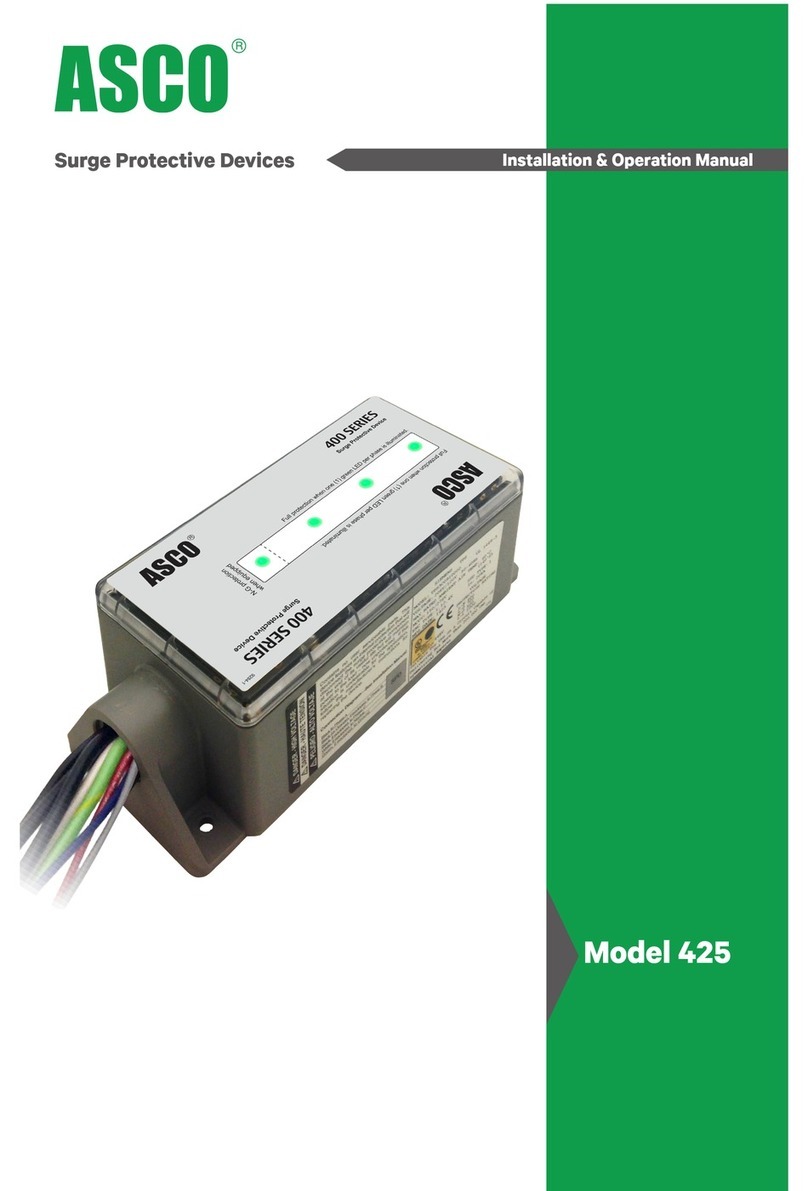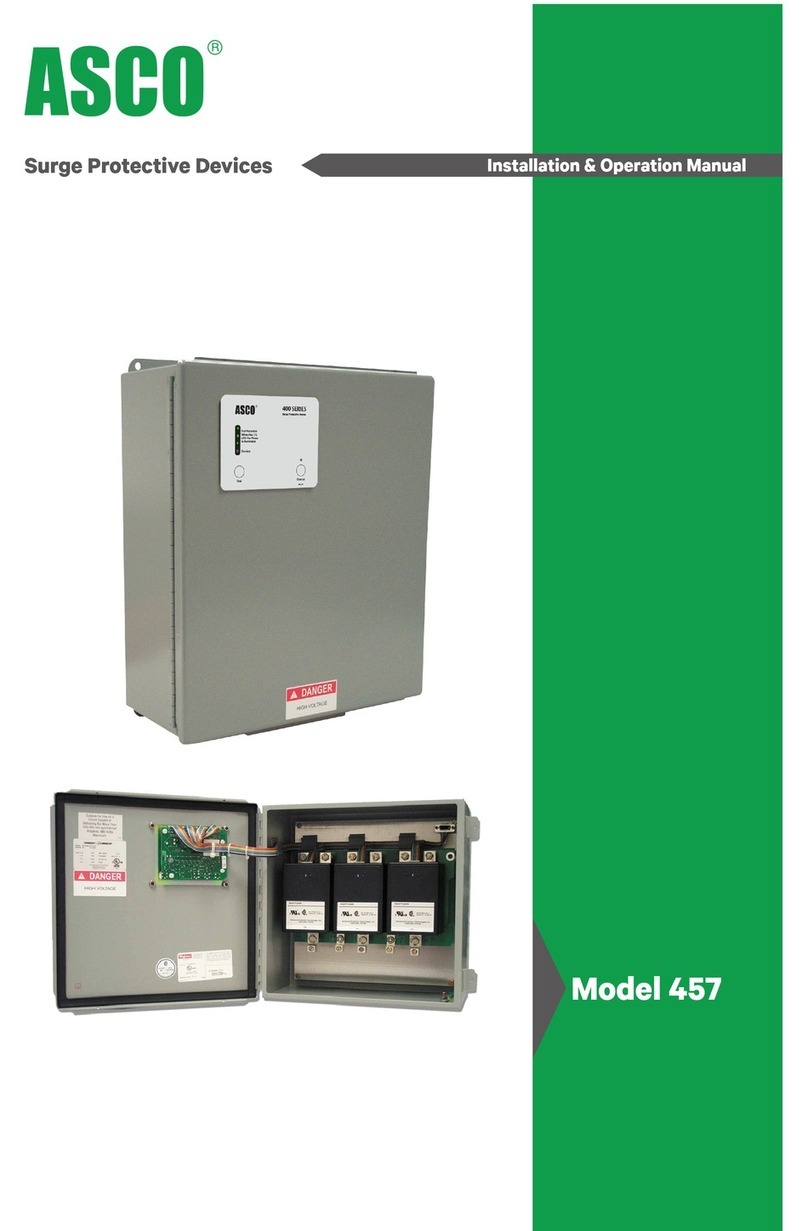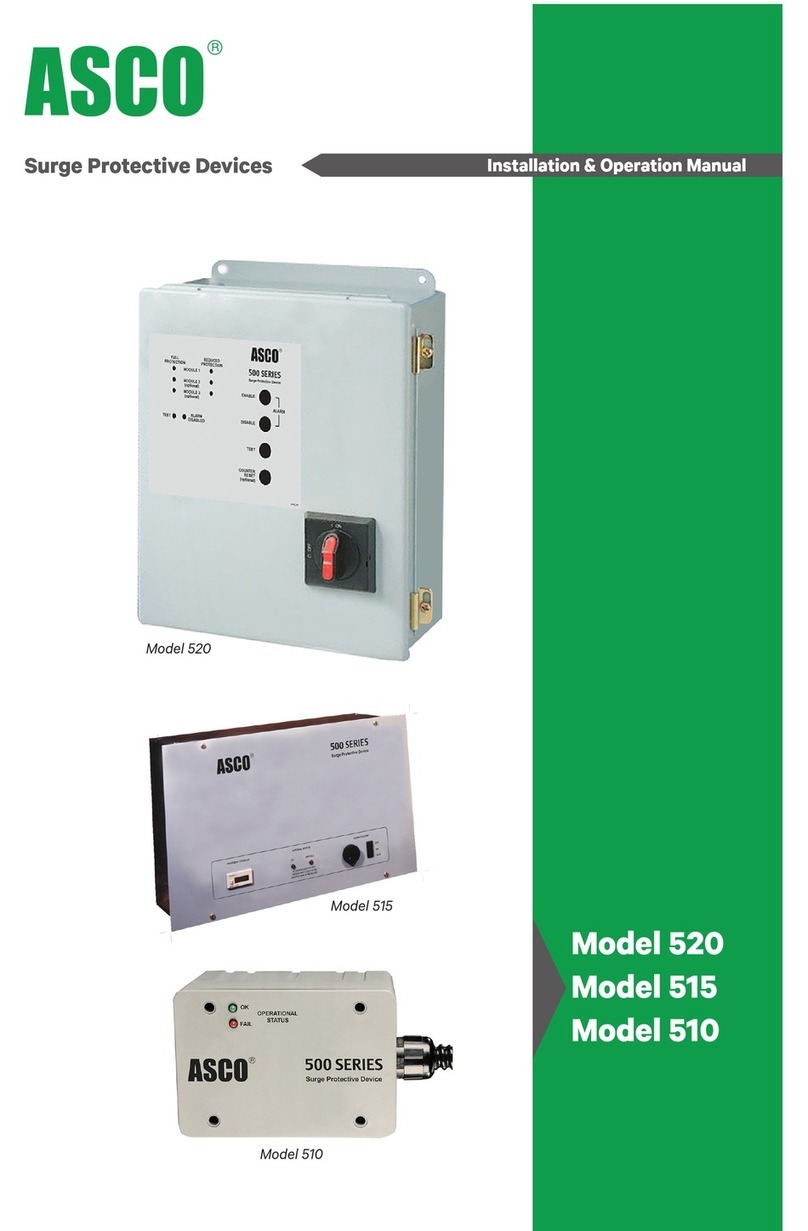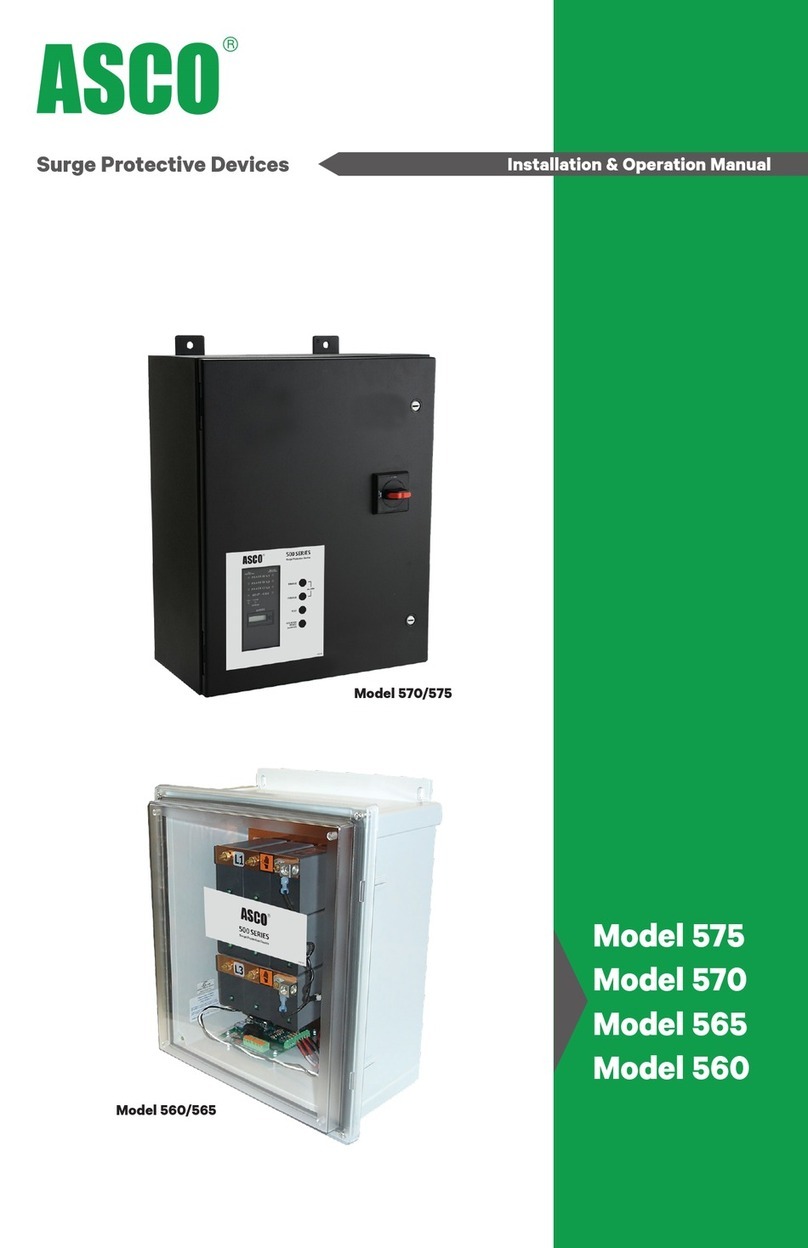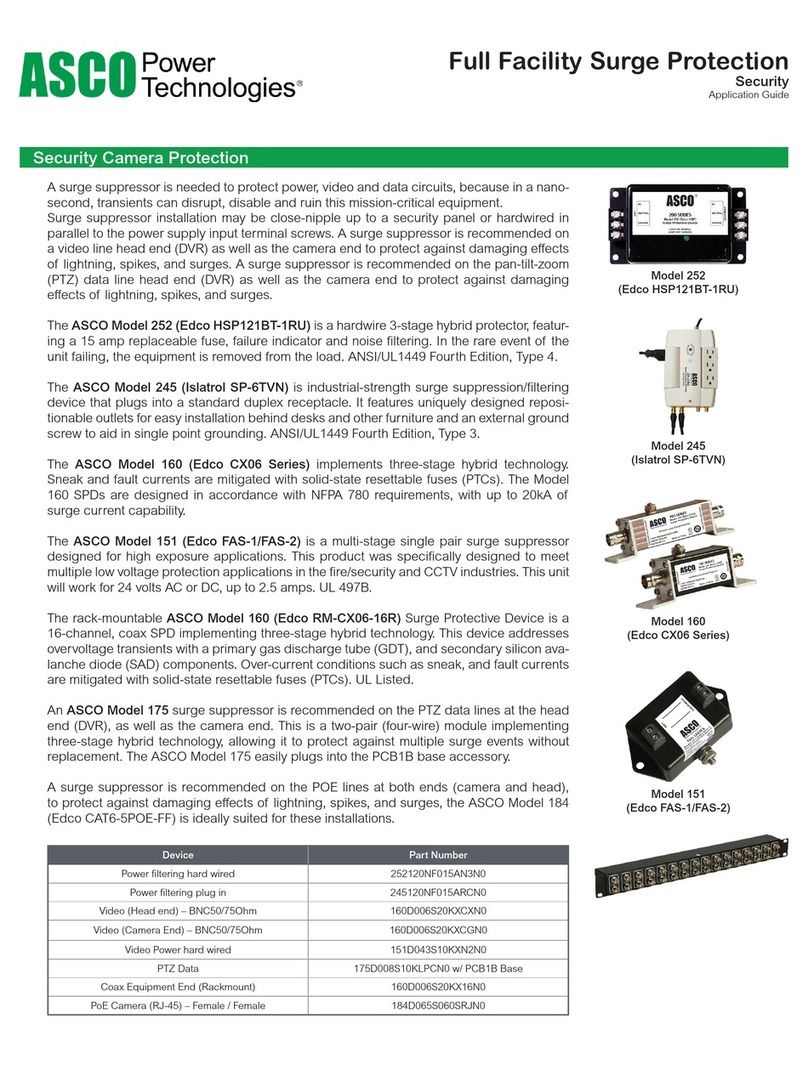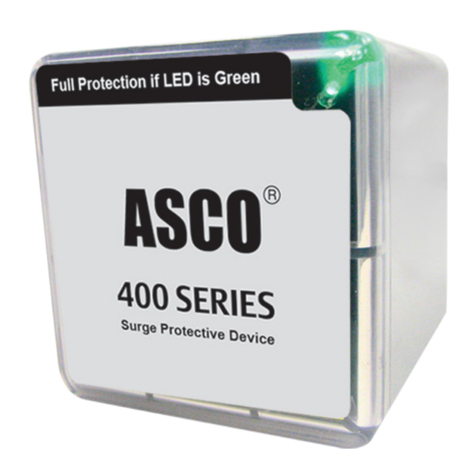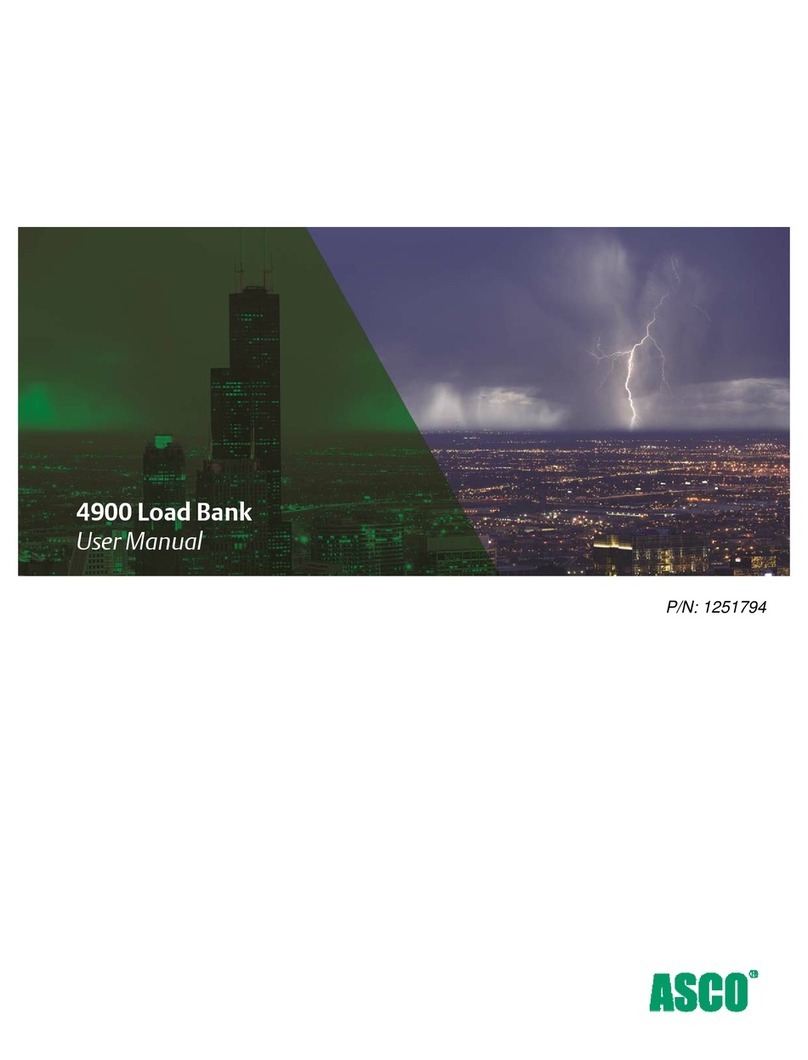
Table of Contents ASCO Model K875A Outdoor Load Bank
DRAWINGS
Part No. kW Volts Load Steps O/L Dwg. Schem. Interconn.
K875AD28042-4 2500 480 50, 50, 100, 100, 200, 500, 500,
500, 500 SB2770 1D30049 D30349
K875AD28042-5 3000 480 50, 50, 100, 100, 200, 500, 500,
500, 500, 500 SB2770 1D30051 D30350
K875AD28042-6 3000 480 50, 50, 100, 100, 200, 500, 500,
500, 500, 500 SB2770 1D31135 D31136
K875AD28042-7 2500 480 5, 10, 10, 25, 50, 100, 100, 200,
500, 500, 500, 500 SB2770 1D38361 D38362
K875AD28042-8 3000 480 5, 10, 10, 25, 50, 100, 100, 200,
500, 500, 500, 500, 500 SB2770 1D42596 D42595
K875AD29440-2 750 480 50, 100, 200, 200, 200 SB2793 2D29809 D29810
K875AD29440-3 750 480 5, 10, 10, 25, 50, 50, 100, 100,
200, 200 SB2793 2D29811 D29812
K875AD29440-4 1000 480 50, 50, 100, 100, 200, 500 SB2793 2D29813 D29814
K875AD29440-5 1000 480 5, 10, 10, 25, 50, 100, 100,
200, 500 SB2793 2D29815 D29816
K875AD29440-6 1000 480 5, 10, 10, 25, 50, 100, 100, 200,
500 SB2793 2D30417 D30416
K875AD29440-10 750 480 25, 25, 50, 50, 100, 100, 200,
200 SB2793 2D42645 D42646
K875AD29461-1 750 240/480 5, 10, 10, 25, 50, 50, 100, 100,
200, 200 SB2793 2D29826 D29827
K875AD29461-2 1000 240/480 50, 50, 100, 100, 200, 500 SB2793 2D29828 D29829
K875AD29461-3 750 240/480 50, 100, 200, 200, 200 SB2793 2D29822 D29823
K875AD29461-4 1000 240/480 5, 10, 10, 25, 50, 100, 100, 200,
500 SB2793 2D29824 D29825
K875AD29461-5 1000
700
480
240
5, 10, 10, 25, 50, 100, 200, 200,
400
5, 10, 10, 25, 50, 100, 100, 200,
200
SB2793 2D31287 D31288
K875AD29650-3 1500 480 5, 10, 10, 25, 50, 100, 100, 200,
500, 500 SB2827 3D30041 D30278
K875AD29650-4 1500 480 50, 50, 100, 100, 200, 500, 500 SB2827 3D30042 D30125
K875AD29650-5 1500 240/480 5, 10, 10, 25, 50, 100, 100, 200,
500, 500 SB2827 3D30043 D30126
K875AD29650-6 1500 240/480 50, 50, 100, 100, 200, 500, 500 SB2827 3D30044 D30127
K875AD29650-7 2000 480 5, 10, 10, 25, 50, 100, 100, 200,
500, 500, 500 SB2827 3D30088 D30089
K875AD29650-8 2000 480 50, 50, 100, 100, 200, 500, 500,
500 SB2827 3D30047 D30296
K875AD29650-9 2000 480 50, 50, 100, 100, 200, 500, 500,
500 SB2827 3D30047 D30296
K875AD29650-14 1250 480 50, 100, 100, 100, 200, 200,
500 SB2827 3D35454 D35453
K875AD36922-1 1250 480 5, 10, 10, 25, 50, 50, 100, 100,
200, 200, 500 SB2827 3D36923 D36924
See the following page for additional drawings. -ii-






